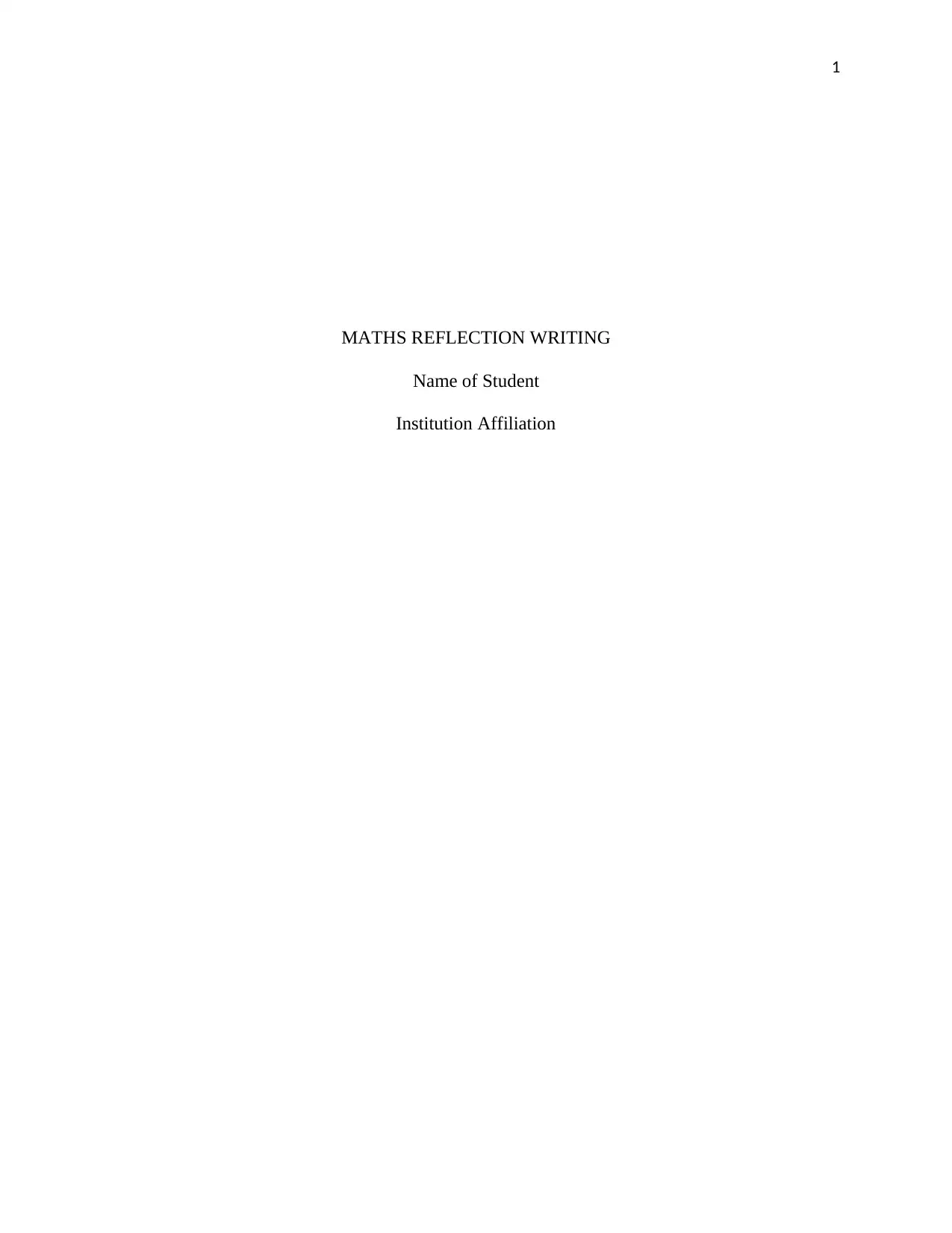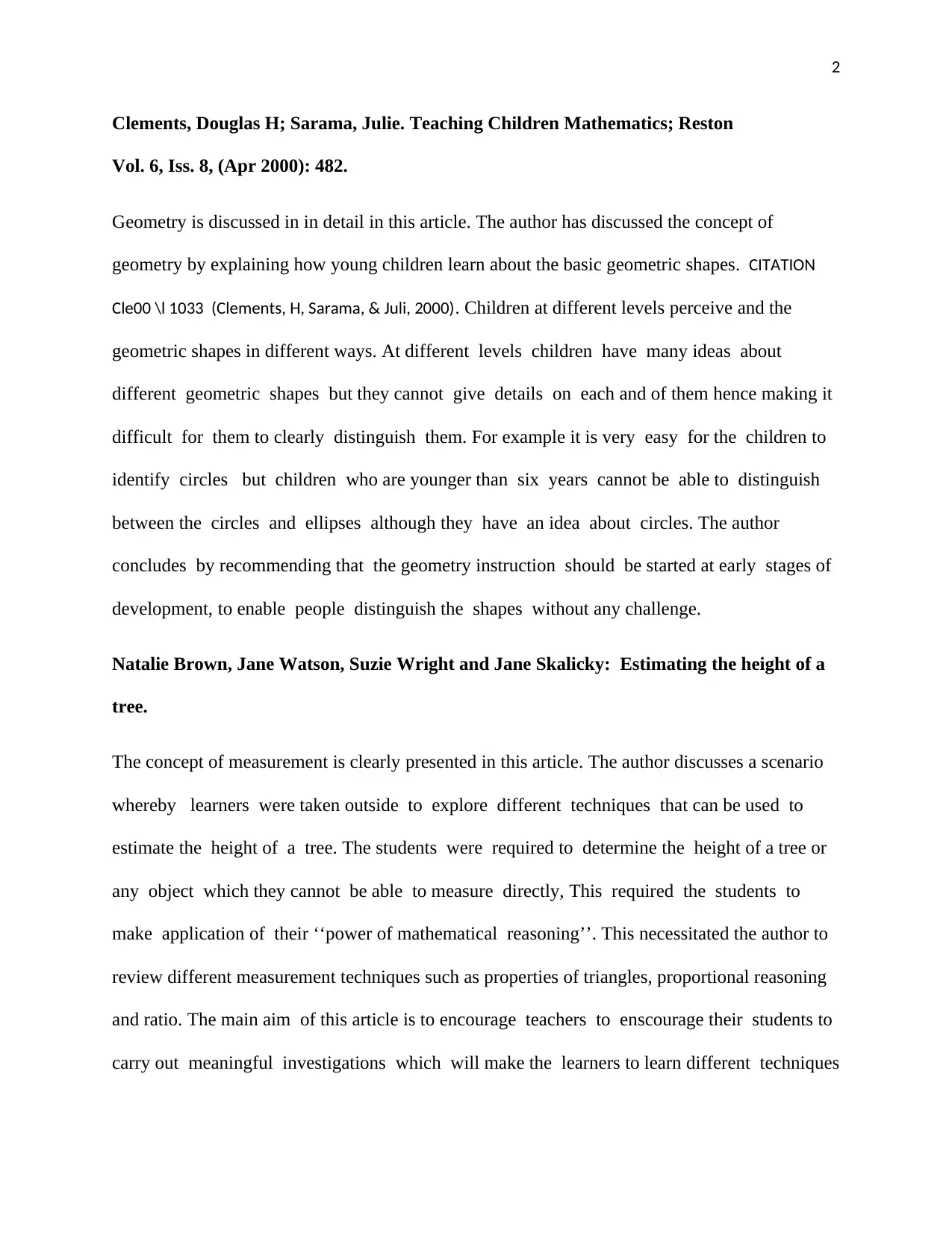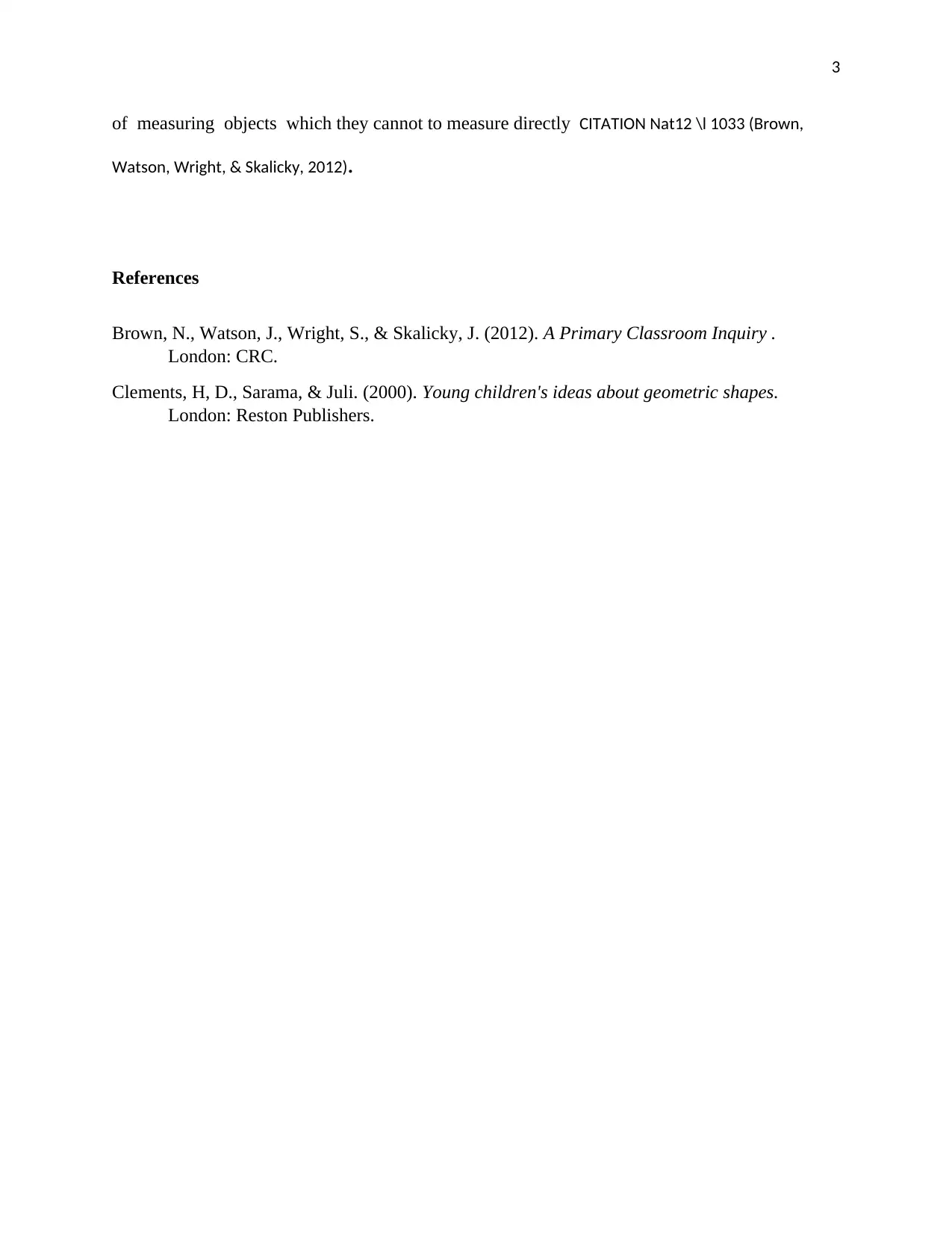Math Reflection: Analyzing Geometry and Measurement in K12
VerifiedAdded on 2022/10/04
|3
|422
|41
Homework Assignment
AI Summary
This homework assignment delves into key concepts in K12 mathematics, specifically focusing on geometry, measurement, and numeracy. The assignment analyzes articles discussing young children's understanding of geometric shapes, measurement techniques, and the development of mathematical reasoning. It examines how children perceive and learn about shapes at different developmental stages, the importance of problem-based learning, and the role of teachers in facilitating mathematical discussions and investigations. The reflection also emphasizes the significance of numeracy and encourages the use of mathematical reasoning to solve real-world problems, such as estimating the height of a tree. The assignment highlights the importance of early geometry instruction and the application of various measurement techniques, including proportional reasoning and properties of triangles. The analysis also includes the importance of explaining and justifying mathematical ideas in the classroom setting, and how teachers can encourage student participation and understanding of mathematical concepts. Finally, the assignment underscores the need for teachers to understand students' learning backgrounds to effectively teach them and promote successful learning outcomes.
1 out of 3




![[object Object]](/_next/static/media/star-bottom.7253800d.svg)